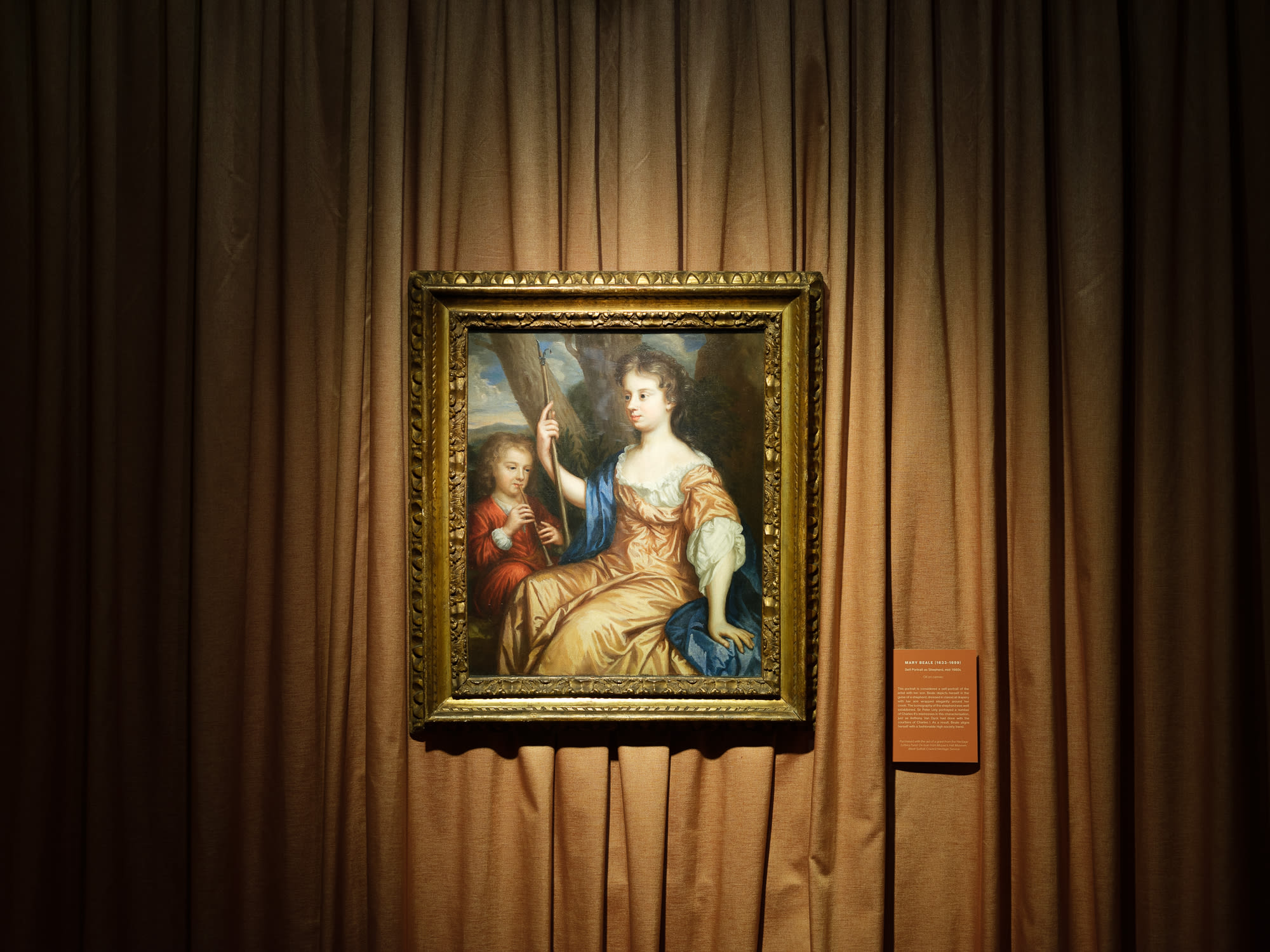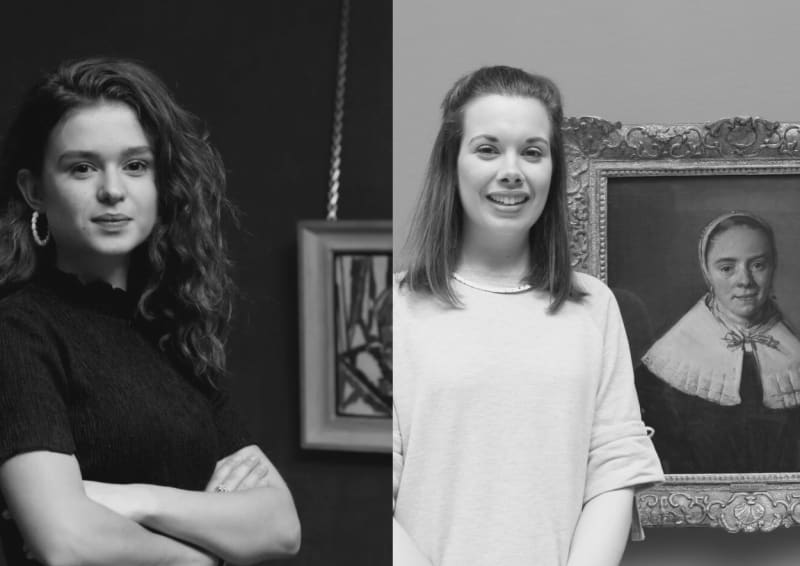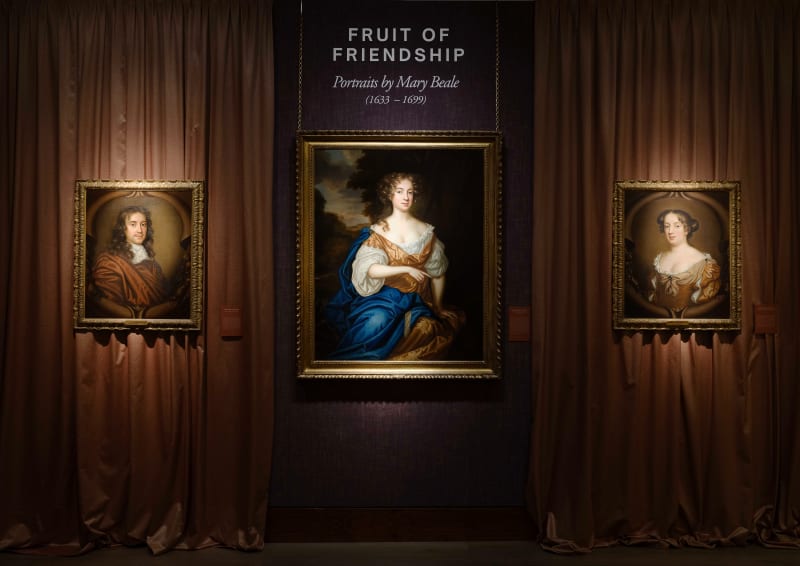To mark the opening of our exhibition Fruit of Friendship: Portraits by Mary Beale, Antique Collecting asked Philip Mould and our Researcher & Exhibitions Coordinator Ellie Smith for their insights into Mary Beale.

Q: What other historic sources were valuable for informing the exhibition?
A: Mary Beale's husband, Charles, meticulously chronicled her daily work in the studio. The diaries, two of which survive in full (others survive in part through notes taken by George Vertue, and published by the Walpole Society), are invaluable primary sources. They detail which portraits Beale was working on at any given time, record her experiments with different materials, the payments her children received for their work in the studio and Charles' distribution of pigments.
Q: There are several thoughts as to the artists who taught the young Mary – who do you think were the most important?
A: There is no conclusive evidence to allow us to say with any certainty who Beale trained with. It has been purported that she received training from Sir Peter Lely and Robert Walker but neither of these have been confirmed through primary evidence. Her father was an amateur painter, so it is highly possible that she was introduced to painting through him.
Q: How vital was it for Mary to be seen as respectable?
A: Beale’s entire career relied on her status as a virtuous, respectable women. Married women were not expected to earn a living, in fact they were often prevented from doing so, which meant that it was essential for Beale to ‘prove’ her respectability, and slowly build her reputation. She painted members of the Church, who would have greatly bolstered her reputational standing as a woman of virtue.
Q: The exhibition is called Fruit of Friendship – how important were Beale’s relationships both in terms of respectability and networking?
A: Beale’s friendships played a vital role in building her reputation. Unlike many of her male contemporaries, who could afford to be brazen in their self-promotion, Beale adopted a more nuanced approach, which relied heavily on her close connections. In slowly building her clientele, through family and friends, Beale’s artworks found their way into the homes of some of London’s most privileged and wealthy individuals. It appears that this had a snowball effect, which allowed her reputation to grow.
Q: In which portraits do we see Beale at her best?
A: This, of course, depends on the eye of the beholder. At the gallery, we think that her portraits of her immediate family – her sons and husband – constitute some of her most experimental and emotive paintings. These differ from the glitz and glamour of her portraits of high society, which often used poses and patters from Lely’s portraits. Her familial portraits offer an insight into her determination to perfect and develop her skills as a portrait artist – numerous paintings show her family in different poses and with a variety of expressions. These works, which were not a money-making exercise, are a true record of her determination to excel in her career.
Q: How much of a family affair were her works? What part did her sons play?
A: By at least 1676, Beale’s sons were playing a vital part in their mother’s studio. They were paid, per painting, for their contributions towards the drapery and ovel surrounds which have become synonymous with her work. Painting drapery was a typical task given to studio assistants during the 17th century – both Lely and Godfrey Kneller employed assistants in their studios. An excellent example of this in our exhibition is Beale’s portrait of Anne Sotheby; Charles Jnr was paid £1 for the assistance with the drapery in this instance.
Q: What are the hallmarks of a typical Mary Beale portrait?
A: Brightly lit, warm colouring and clear facial modelling, and often the inclusion of ornamental ovals surrounding her half-length portraits.
Q: What effect will the current exhibitions have on the market for her work?
A: We have been dealing in Mary Beale for over 35 years and have seen the market rise steadily. This has also increased notably of late because of the rise of interest in women painters. We cannot predict the commercial impact of this exhibition – this is not our primary motivation. Our aim is to bring into the public domain the tremendous research undertaken over the last 10 years or so which will further consolidate her emotive position in British art history.
Read the full article in the April 2024 issue of Antique Collecting.






